RUSTED SMITH & WESSON SHIELD SAFETY
Rusted & Dangerous Condition
By James Nicholas
A customer recently sent me his 40 caliber S&W Shield for a simple sight install. The customer told me that the gun was less than 1 year old and had less than 300 rounds through it. On initial observation, the pistol appeared to be well cared for and in excellent condition. It was dripping with oil and had no visible rust issues.
This is the actual slide that contained the internal rust issues. As you can see, there is no visible rust present.
I started to remove the factory rear sight as I normally would. It was then that I noticed a gritty sound and feel when removing the sight. Once the site was removed, I discovered that the bottom of the sight was rusted and there was rust all in the rear dove tail of the slide.
The rust was bad enough that I removed the striker block spring and cap to inspect them. They were both rusted as well. One of the main selling points of the S&W M&P series of pistols is the melonite finish with its rust resistant properties. One of the bad things is that even though the slide is rust resistant, the small parts and assemblies are not as rust resistant. Rust is like an animal. it will continue to feed and grow. It will not stop on its own.
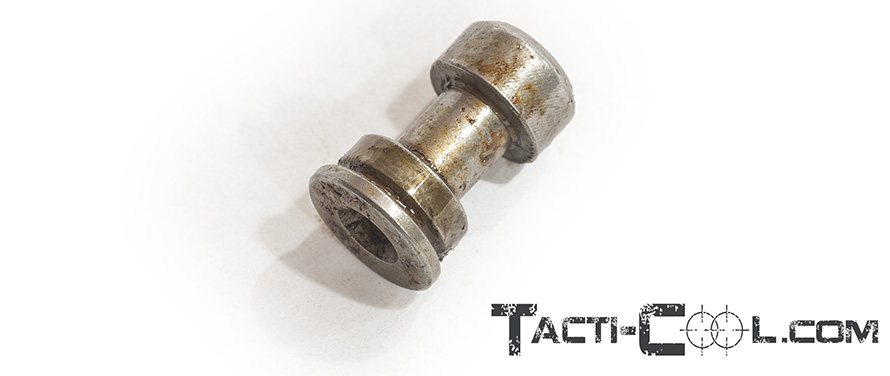
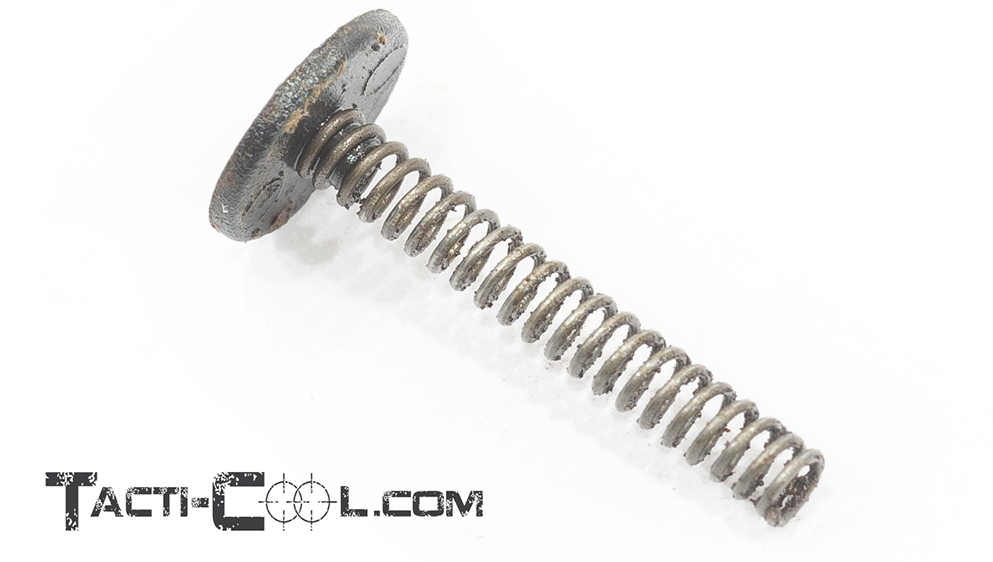
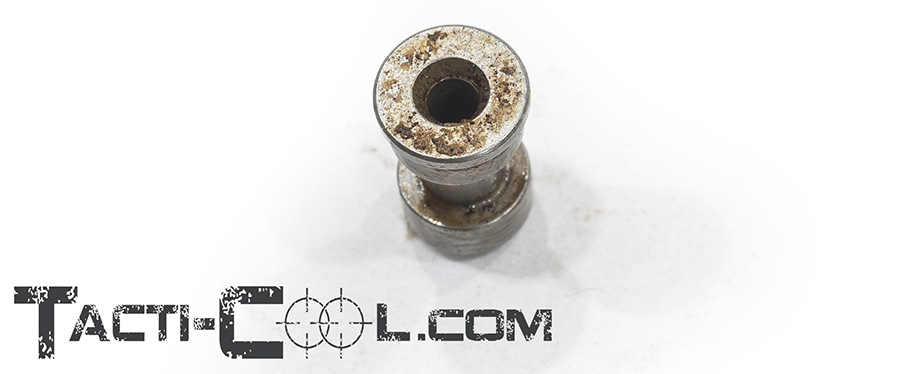
I suspected that the rust continued internally so I continued with the disassembly and removed the striker block. Sure enough, the striker block spring had some rust that could over time continue to weaken the spring and eventually may disable the safety. Strangely enough, there was actually oil present where the gun had rusted despite being oiled
To further follow the extent of the damage, I then removed the end cap assembly (slide back plate) and removed the striker. When inspecting the striker, I found rust on the tab. If the tab rusted enough, then the drop safety feature of the pistol could cease to work.
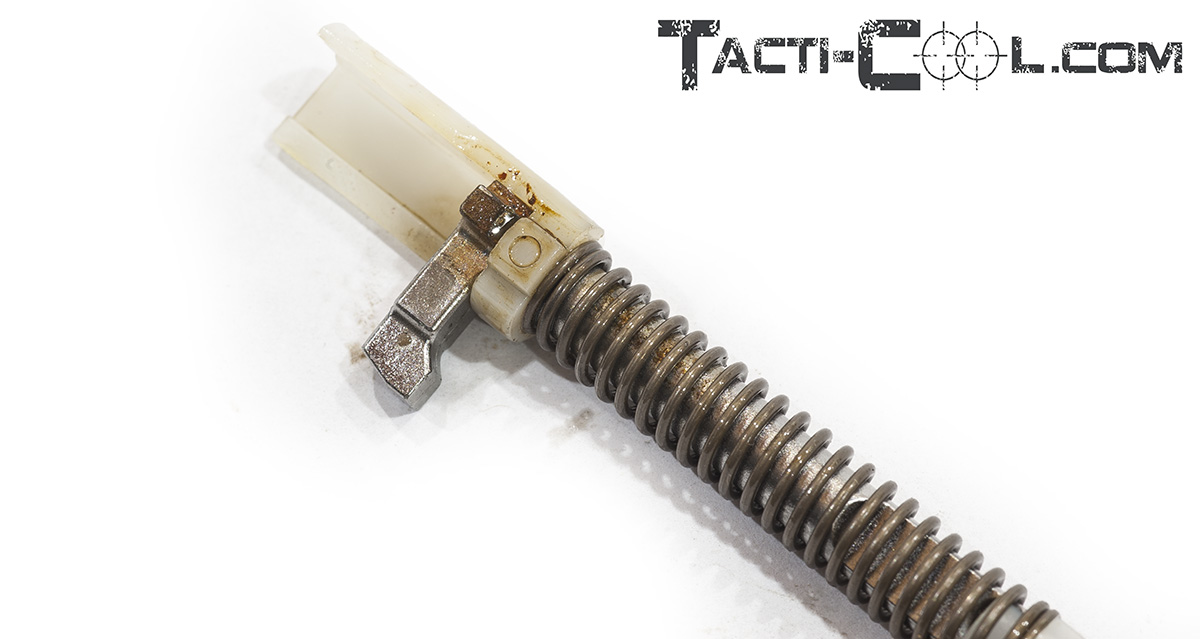
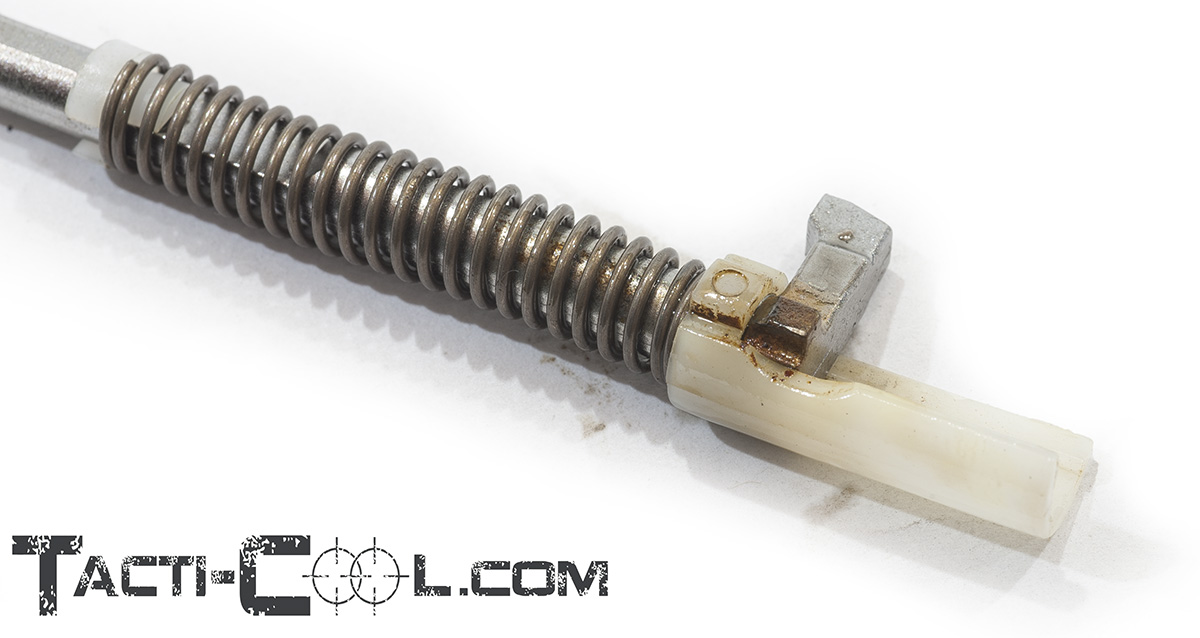

The striker block is an integral and main part of the pistol's safety. There was enough rust that could have worsened over time leading to the safety becoming stuck and inoperable.
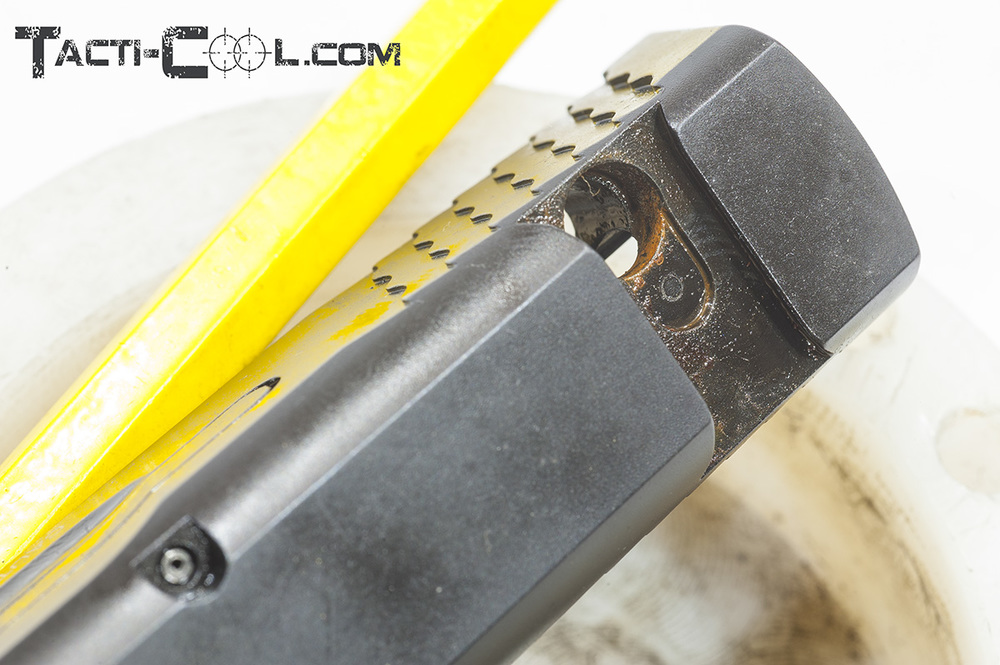
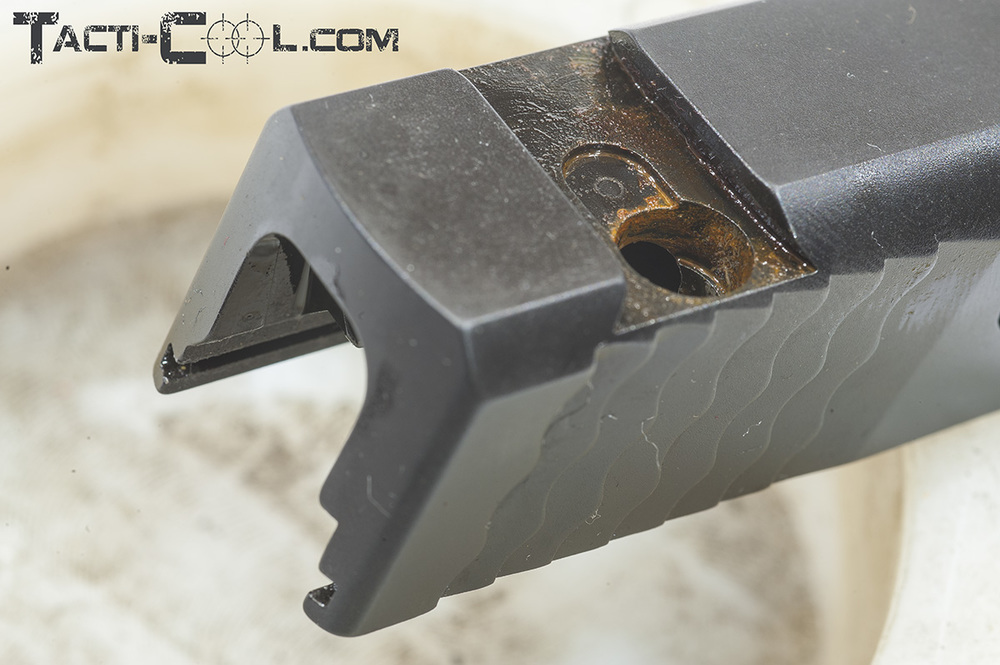
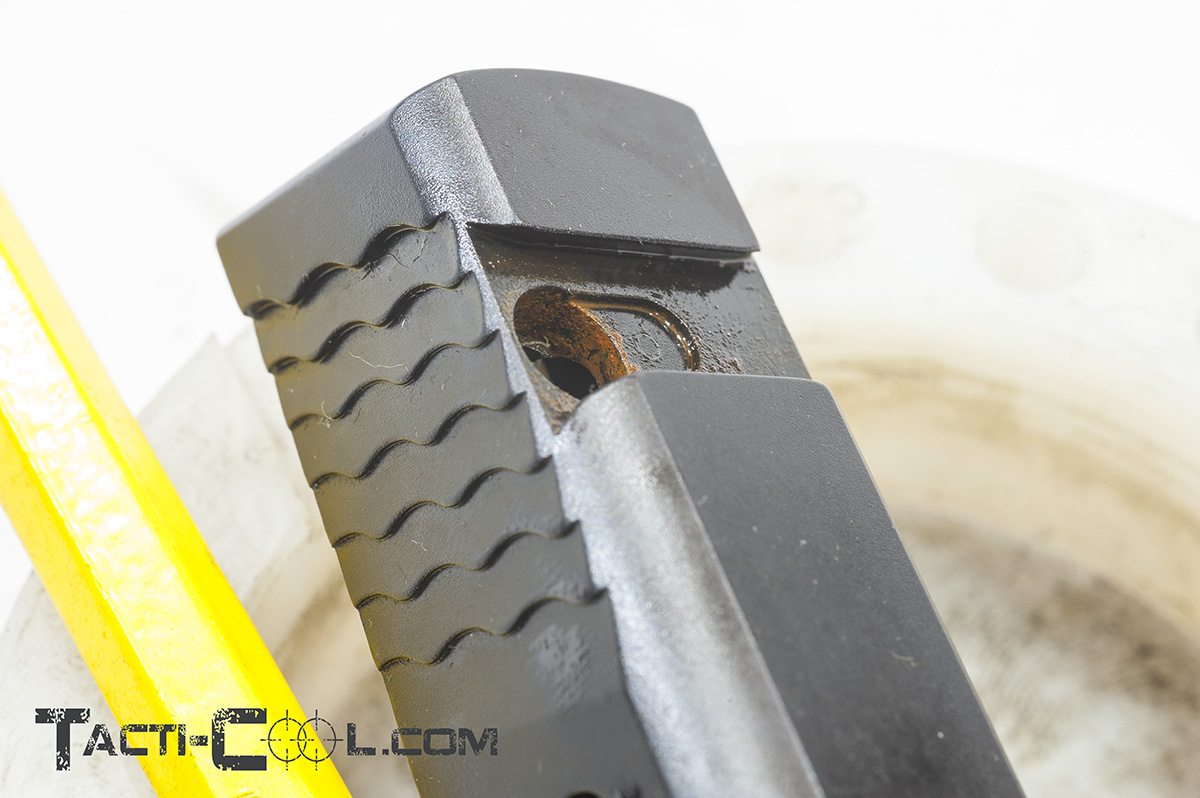
In all outward appearances this pistol seemed to look and function fine. However, internally and hidden from view, it was a disaster waiting to happen. My advice is to avoid getting your pistol wet if possible. However, should it come into contact with water, thoroughly dry, clean, and re-oil your pistol as soon as possible. Remember that rust resistant does not mean rust proof. Armorers should take the extra effort to remove the rear site and inspect for this kind of damage during any major inspections. Remember that pistols are machines and required due diligence and proper maintenance to be kept in safe working condition. Even though this damage was hidden and only discovered when I removed the rear site, it could have been found during a routine inspection and cleaning just by removing the back plate and cleaning in the striker channel. Upon seeing the first evidence of rust in the striker channel, you would have been prompted to perform a more detailed disassembly to find the complete extent of the rust damage. This condition would not have stopped on its own, and it would have created an unsafe pistol. Please do not take these pictures and story lightly. This is something all gun owners can learn from.










